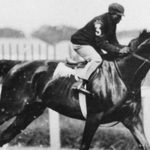News FeatureBy Elena Shore and Donal Brown, Pacific News Service Editor’s Note: The ethnic media is trying to downplay the mainstream media’s polarizing coverage of recent tensions in L.A. See our analysis “L.A.’s Black-Brown Divisions Deepen,” linked at the end, for a further, in-depth look at the problems and hope for resolution.
LOS ANGELES – Aug 26, 2005 – Black and Latino media are training the spotlight on the state of relations between blacks and Latinos in this increasingly Hispanic city, in an effort to defuse sensationalism in the coverage of thorny problems between the two communities. It has been a bumpy ride for race relations in recent months. Last April, fights broke out between more than 100 black and Latino students at Jefferson High School in South Central Los Angeles, the latest in a series of brawls that took place in schools in the area, including the Crenshaw, Manual Arts and Jordan high schools. In July, African American victims of a spate of freeway shootings identified their assailants as Latinos, prompting rumors that Latino gang members were targeting blacks at random. “Whether or not that’s true — and I don’t think it is — it speaks to relations between blacks and Latinos in the inner city,” says Andre Herndon, editor of The Wave Newspapers. In the Aug. 10 edition of La Opinión, Eileen Truax reported an incident in which an African American bus driver ordered all Hispanic passengers off her bus. The driver thought they were saying offensive things about her in Spanish. “Latino immigrants became easy targets in the streets of South Los Angeles,” explains Randy Jurado Ertll about the neighborhood where he grew up, in the May 19 edition of Eastern Group Publications. Latinos and other immigrants have displaced residents from traditionally black neighborhoods like Watts and South Central Los Angeles, where Latinos now make up the majority, notes Jorge Luis Macías in the Aug. 2 edition of La Opinión, But Ertll adds, “it was a taboo to mention the rising tension between these two communities. Now, we see the negative results of ignoring and remaining silent. African American and Latino students are now physically hurting each other at a larger scale and we must now confront and resolve these tensions.” However, attempts to portray a general animosity between the two groups are “a lot of nonsense,” says Bernard Lloyd of the L.A. Sentinel, adding that much of the violence comes not from ordinary working people but from gangs who are trying to defend their territory. “The tensions are on the street level, among young people,” says Herndon. “But on a political level, blacks and Latinos are reaching out to one another because they understand that they need each other.” Reverend Al Sharpton of New York City’s National Action Network and Christine Chávez of the United Farm Workers on Aug. 1 unveiled the Latino & African American Leadership Alliance, a “historic” coalition that aims to diminish racial tensions. The Wave Newspapers report that Latinos and blacks have found common ground on three incidents: the police shooting of 13-year-old Devin Brown, who was driving a stolen car; the police shooting of 19-month-old Suzie Marie Peña in a standoff with her father; the beating of Stanley Miller, who was suspected of stealing a car June 2004 in Compton. Kevin Herrera of the Wave reported that during a Days of Dialogue session with the Los Angeles Police Department in Watts, residents felt that “the LAPD is still operating like an occupying force that devalues black and Latino lives.” In a July 15 story headlined “Are L.A. Freeway Shootings Racially Motivated?”, Betty Pleasant, also of the Wave, points out that while African American victims of the freeway shootings described their assailants as “bald Latino men,” Latino-on-black crimes accounted for only six percent of reported incidents in South Los Angeles. While this was up slightly, most of the cases involved black-on-black violence. “The nightly news wants to show a black-Latino race riot,” says Herndon. “We are less interested in sensationalizing it than in trying to find ways to unify the community because they live together.” There has been a history of African American-Hispanic unity in Los Angeles. In the early 1990s, the two groups formed a bus riders union that brought vastly improved bus service at cheaper rates for citizens from poor communities. Earlier this year, Hispanic and African American leaders joined with the American Association of Retired Persons (AARP) to fight President George W. Bush’s proposal for reforming Social Security. Black voters’ support of Antonio Villaraigosa in the May, 2005 election helped him to become the first Latino mayor of the city since 1872. Some, however, see a black-Latino political alliance as a threat. Conservative talk shows on local radio stations like KFI and KABC “are constantly looking at how Latinos are taking jobs away from blacks,” observes Eastern Group Publications editor Gloria Alvarez. “They’re Trying to Divide Latinos and African Americans,” reads the Aug. 15 headline of a La Opinión article by Jaime E. Olivares, who reports that a forum intended to bring black and Latino leaders together was “unexpectedly invaded by members of the Minutemen and turned into a raucous expression of hate against immigrants.” “It is very likely that invasions like this are going to happen again in South Central Los Angeles, where Latinos and African Americans are looking for ways to unite to work for common goals,” he writes. “We only hope that Latinos and African Americans don’t let themselves be manipulated by the racist rhetoric carefully disguised as a patriotic campaign against documented or undocumented immigrants,” he adds. Elena Shore and Donal Brown are writers for PNS and New America Media. |
||
|










